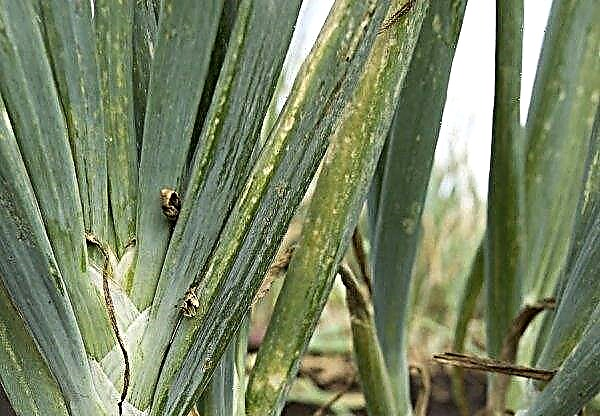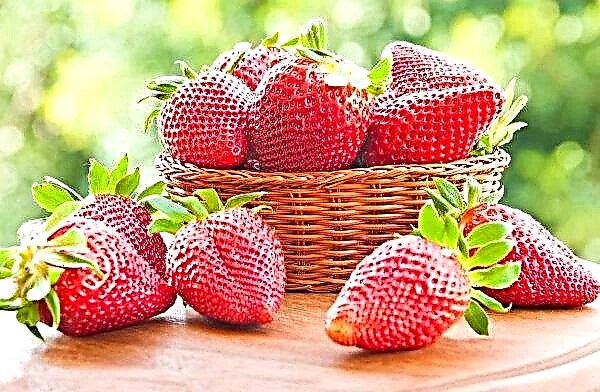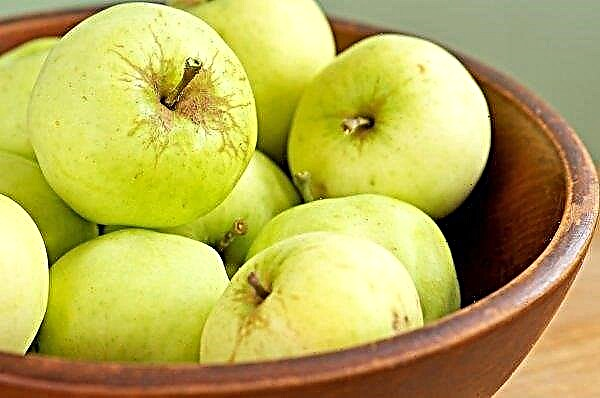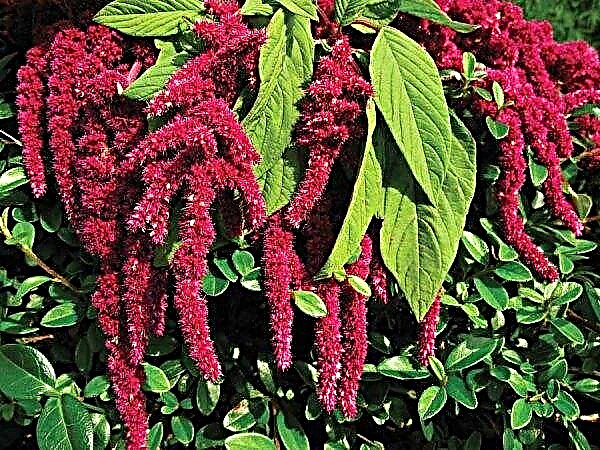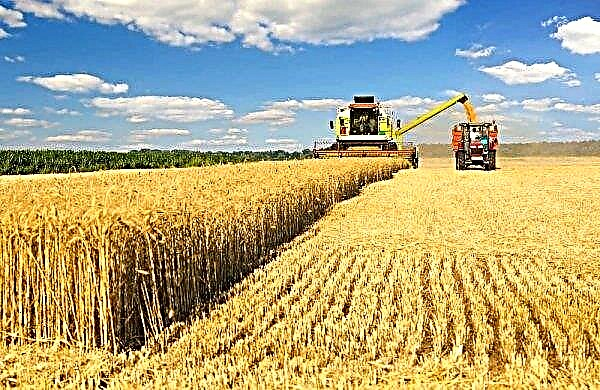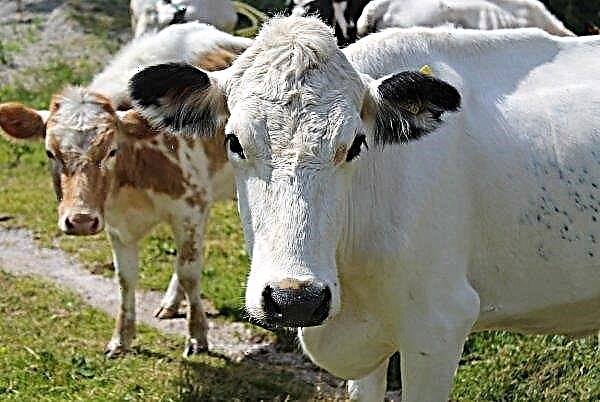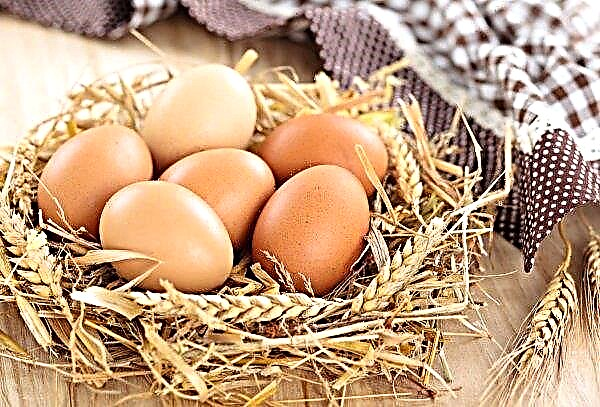Pruning is one of the constantly discussed issues of planting onions. How to do it right and whether it is needed in the fall, as well as the subtleties of the winter planting sevka later in the article.
How to trim onions
Onion sets are usually cut off before spring planting. This allows the seedlings to begin to grow faster and break through to the surface of the earth.
Depending on the purpose, the trimming technology differs as follows:
- to grow greens ("on the feather") cut about a third of the bulbs. This method stimulates the active growth of dense growth, which is then easy to dig out without damaging the roots;
- to get a onion crop, cut the dry tail of the seed set without damaging the inside.
Did you know? The reaction of the eyes to cutting onions is associated with the release of special amino acids and enzymes that turn into a volatile substance (sulfinyl propane). Having then got on the mucous membrane of the eye, it forms particles of sulfuric acid, which irritates the eyes.
It is also recommended to cut dry roots so that young roots form as quickly as possible.
Do I need to cut winter onions when planting in the winter
Winter planting of the plant does not require pruning, since the onion should not immediately begin to grow. It is necessary to ensure a good wintering, for which the presence of additional protection in the form of husks and scales will not be amiss. The preparation of planting material includes several stages, which will be described in detail in the corresponding section.

Features of winter onion planting
- Planting under the winter allows you to get an early harvest, and also has the following advantages:
- the ability to reuse the place on the bed for growing greens or rapidly ripening vegetables;
- reduction of weed growth due to early onion growth and weeding facilitation;
- less damage to crops by onion fly;
- the use of shallow seed, which gives the best yield of bulbs with minimal shooting;
- winter crops are then better stored;
- saving time in the spring.
- The disadvantages of the method include:
- increased planting rate, as part of the set can freeze;
- the need for additional shelter in the event of a snowless winter.
Site selection and soil preparation
Onion beds need a sunny and dry place with light and fertile soil. Optimum precursor plants are legumes, nightshade, cucumbers. You can return the onion to the same place only in the third year.

The beds should not be flooded with melt or rain water, so it is advisable to raise them slightly. Site preparation begins in September. The dug up soil before planting should settle and compact. For fertilizer, humus is best suited (5-6 kg per 1 m²), and you can also use mineral mixtures. Before planting, you can make ash at the rate of 1 glass per 1 m².
Important! Necessary soil acidity — 6,4–7.9 pH. If the soil on the bed is too acidic, liming should be done and chalk, lime or dolomite flour should be added.
Landing time
The basic rule is that plants must be planted before the onset of frost, as they must have time to take root. However, too early planting can cause depletion of sevka and its death. The interval between planting and persistent frost should be approximately 25 days. The average daily temperature at this time will be about + 5 ° C.
Selection of planting material
For winter planting, sharp varieties developed for the selected area (zoned) are recommended. Selected planting material must be sorted by size.

Sevc can belong to one of the following categories:
- the first includes specimens with a diameter of up to 1.5 cm;
- the second - up to 3 cm;
- “Samples” includes onions with a diameter of more than 3 cm;
- “Oatmeal” - the smallest specimens, less than 1 cm.
For the cultivation of turnip onions, the best choice would be material of the first category, as well as "oatmeal." The onions of the second category and the sample are planted “on the feather”, because the large sowing often shoots and does not give a good turnip crop. Also from such a plant you can get plants for black seeds.
Important! The smallest onion bulbs are used only for winter sowing, since they most often do not persist until spring.
Preparing planting material
First of all, rotten and damaged bulbs should be separated, and then the planting material should be decontaminated.
The simplest processing involves the following actions:
- Dissolve 1 tbsp. tablespoon of salt in 1 liter of water.
- Immerse the sevoc in the saline solution for 10–20 minutes.
You can use such processing:
- Dissolve 1–1.5 tbsp in 10 l of warm water tablespoons of copper sulfate.
- Soak the onions in the resulting solution before planting for 2-3 hours.
 Traditionally used and disinfection with a solution of potassium permanganate for 6 hours. After processing in bulb solutions, it is necessary to dry evenly. If the autumn was dry and the soil on the site was not previously moistened, the seeds can be additionally soaked. Dipping the plants in warm water (about + 45 ° C for 10 minutes, then the same amount in cold water) will help to accelerate rooting, which can be important in the event of an early frost.
Traditionally used and disinfection with a solution of potassium permanganate for 6 hours. After processing in bulb solutions, it is necessary to dry evenly. If the autumn was dry and the soil on the site was not previously moistened, the seeds can be additionally soaked. Dipping the plants in warm water (about + 45 ° C for 10 minutes, then the same amount in cold water) will help to accelerate rooting, which can be important in the event of an early frost.Did you know? Onions are a valuable honey plant and provide bees with nectar even in the hottest periods. Ripening, onion honey loses its onion flavor, it has a light yellow tint and high density.
Planting onions
Before winter, you can plant onions both in rows and in the form of nests of 3-4 pieces.
The landing technology is as follows:
- Deepen the northeast to a depth of 2-3 cm (overshot and the first category) or 4-6 cm (second category and samples). The interval between plants should not exceed 10 cm, and the distance between rows should be 15–20 cm.
- Sprinkle sevoc with garden soil or humus.
- Mulch the soil with material of organic origin (fallen leaves, hay, legumes).
- Lay spruce branches or branches on top to protect from wind and snow retention. In spring, such protection is removed after snowmelt. For shelter, you can not use the film, as well as small organics (peat, sawdust).

Tips from experienced gardeners
Many years of experience growing winter onions helped to shape certain tricks and features of agricultural technology.
To get a good harvest, they recommend:
- store sevoc in a dry place with good ventilation;
- thin out thick shoots to an interval of 5-6 cm;
- Do not fertilize the soil with fresh manure;
- use joint plantings with marigold, marigolds and carrots to protect crops from pests;
- after harvesting winter onions, you can manage to get a crop of beets, turnips, daikon and radishes, various greens.
Winter landing of onions has many advantages and does not require pruning. In order to get a full-fledged crop, it is necessary to carefully prepare planting material and plant it in a timely manner in compliance with the correct technology.


